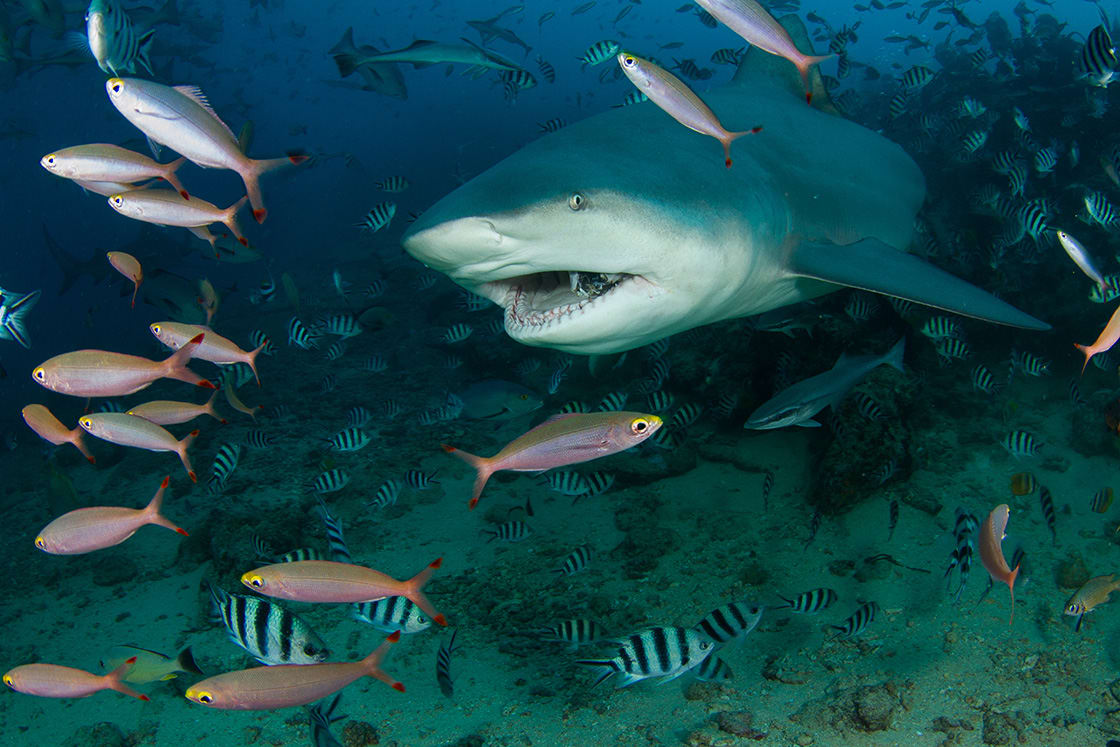
Sharks only live in the sea … don’t they? We know that when the first Spanish explorers saw the mighty Amazon River they called it “The Great Inland Sea”, but it is full of freshwater. So are there sharks in the Amazon? Surprisingly, the answer is YES – bull sharks.
The bull shark, despite being predominantly ocean-dwelling (in aquatic china shops), can incredibly adapt to fresh water. In fact, it’s one of only two species of shark that can live in freshwater (the other being the rare River Shark).
“But where’s the proof?” I hear you say. Well, in 1963 a 265 lb bull shark was caught near Iquitos, Peru, nearly 4,000 km from the Atlantic Ocean; and they are frequently caught in the Brazilian Amazon owing to its proximity to the ocean. In America, they have been witnessed as far up the Mississippi River as Illinois.
Bull sharks can thrive in both saltwater and freshwater because of their special kidneys. These “osmoregulating” kidneys can sense the change in salinity of the water they are in and inhibit the excretion of vital salts, thus recycling them throughout their body.
The reason behind a bull shark being in freshwater is reproduction. Unlike most sharks which lay eggs and rear their young, bull sharks give birth to live young and don’t rear them at all. The shallow freshwater of rivers, therefore, provides the newborn pups with a natural defense against predators.
It is also true that younger bull sharks don’t have a high tolerance to high salinity levels, so they only move into saltwater when they have built up sufficient tolerance.

Bull Shark
The name “bull shark” comes from the shark’s stocky shape (high body-width-to-length ratio), broad, flat snout, and aggressive, unpredictable behavior. Females are typically larger than males, with an adult female bull shark measuring an average 7.9 ft long and weighing 290 lbs, whereas the slightly smaller adult male averages 7.4 ft and 210 lbs.
The maximum recorded size of a bull shark was a huge 13 ft, and the maximum recorded weight a hefty 690 lbs.
Bull sharks have remarkable teeth. Hundreds of triangular, very sharp, serrated teeth. Located in rows that rotate, the first two rows are used to catch their prey, while the other rows rotate into place as needed should any teeth be lost.
Incredibly bull sharks have a bite force of up to 1,300 lbs (6,000N), the highest among all sharks.
Bull sharks are definitely on a see-food diet. They eat almost anything – fish, turtles, birds, sloths, even dolphins, stingrays, and other bull sharks!
What about humans? Being aggressive in personality and unfortunately preferring the shallow coastal waters where people tend to swim, the bull shark is considered to be the most dangerous shark to humans, despite being third behind the tiger and great white sharks in terms of a number of unprovoked attacks on humans (according to the International Shark Attack File (ISAF)).
Indeed bull sharks are widely thought to have been responsible for the Jersey Shore shark attacks of 1916, which were the inspiration for Peter Benchley’s novel (and the subsequent Steven Spielberg film) “Jaws”.
Fortunately the chances of encountering a bull shark on an Amazon River cruise are slim, although we might not be swimming in the Amazon anytime soon!
While Rainforest Cruises aim to provide accurate and up-to-date information, we make no representations as to the accuracy or completeness of any information herein or found by following any link on this site. Rainforest Cruises cannot and will not accept responsibility for any omissions or inaccuracies, or for any consequences arising therefrom, including any losses, injuries, or damages resulting from the display or use of this information.




